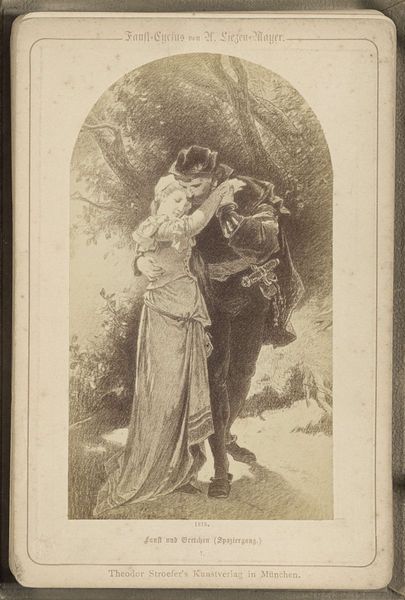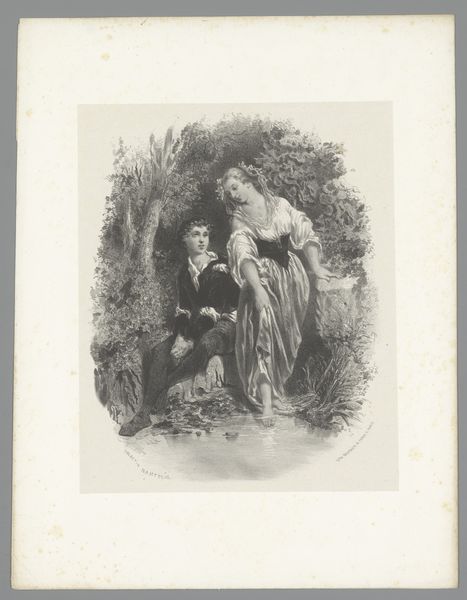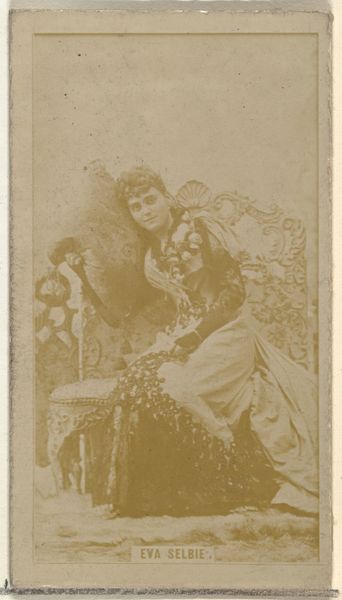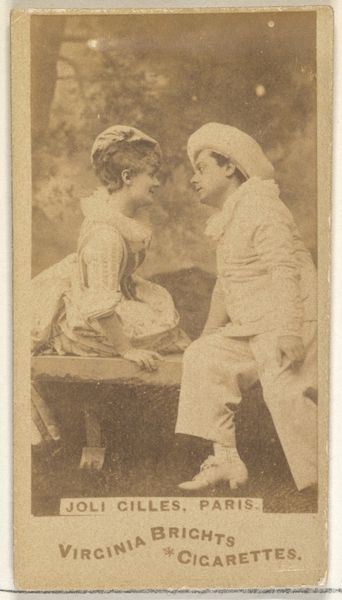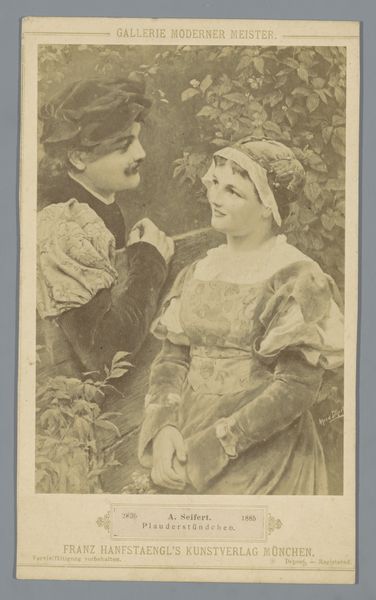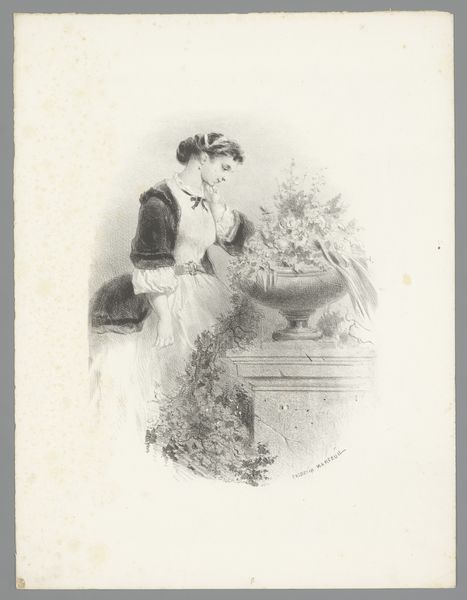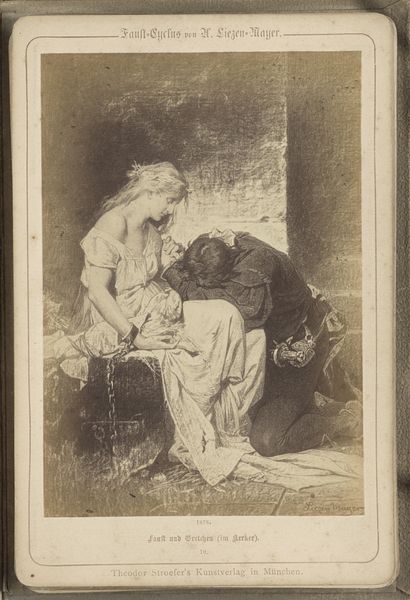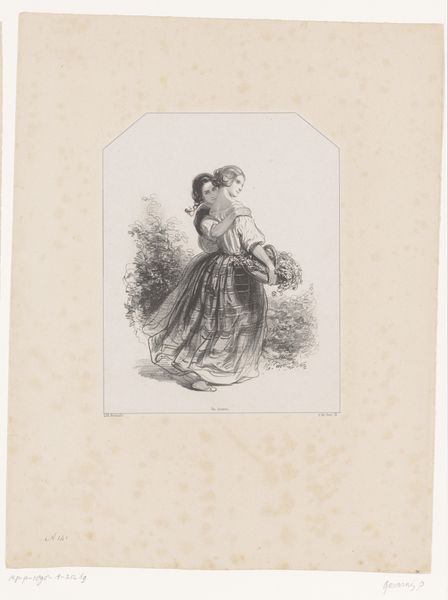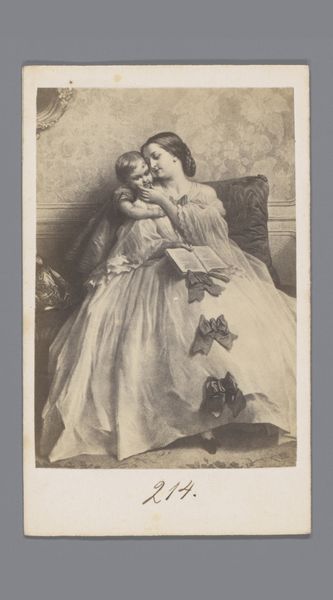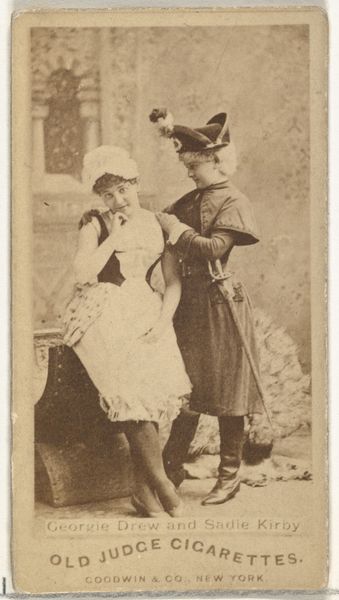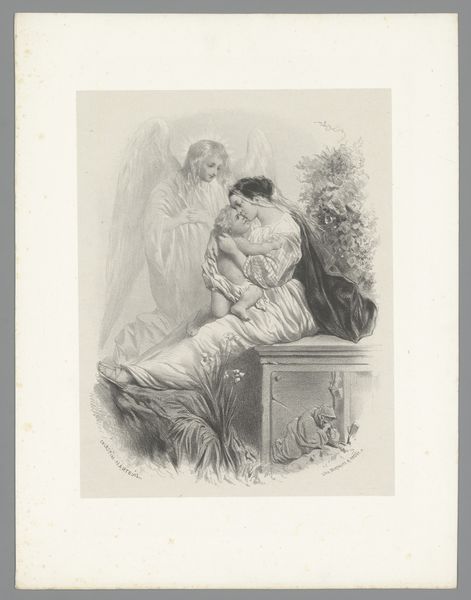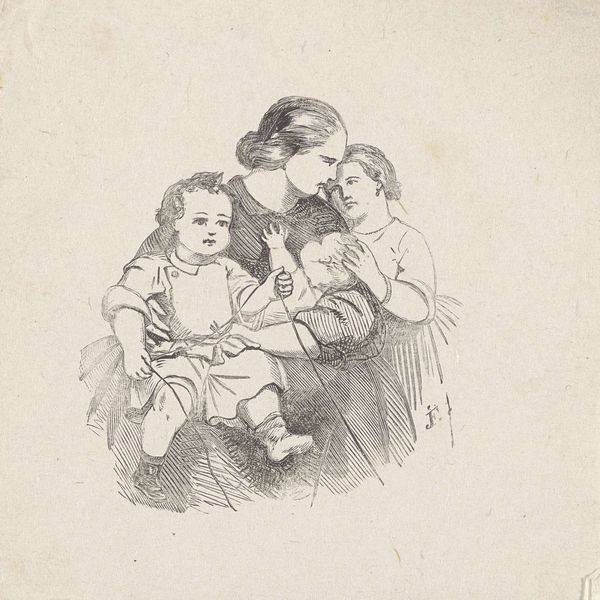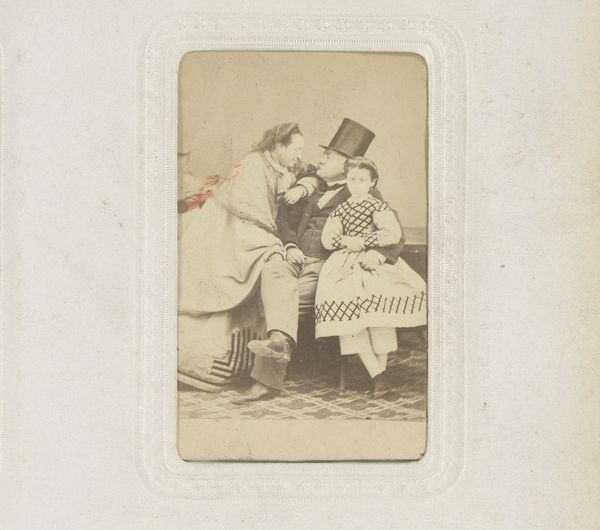
Fotoreproductie van (vermoedelijk) een tekening getiteld 'Faust en Gretchen in de tuin' 1879
0:00
0:00
Dimensions: height 143 mm, width 97 mm, height 172 mm, width 113 mm
Copyright: Rijks Museum: Open Domain
Curator: This print, likely a photo reproduction of a drawing, is titled "Faust and Gretchen in the Garden," dating from 1879. It comes to us from Theodor Stroefer's Kunstverlag in Munich. My first impression is one of delicate intimacy. There is a certain sweetness that evokes longing. Editor: Yes, the light, faded quality definitely contributes to that atmosphere. It feels almost voyeuristic, capturing a stolen moment. I find myself thinking about the power dynamics at play in Goethe's Faust. Gretchen, a woman of lower social standing, is seduced and ultimately destroyed by Faust’s ambition. Curator: Precisely. This reproduction serves as evidence of how society transforms complex narratives into palatable images. The artistic choices emphasize romance, almost glossing over Gretchen's eventual tragedy as a sacrifice born from passion. How can the genre of history-painting both enshrine and obscure societal inequalities? Editor: Indeed. Think of the politics surrounding the consumption of romantic images. Does this visual interpretation inadvertently legitimize or aestheticize Gretchen's vulnerability, mirroring historical tendencies of diminishing female experiences? The popularity of works illustrating literary giants like Goethe shaped the way we view moral themes and class tensions. Curator: It's vital to address such socio-historical interpretations. For today's viewers, recognizing those loaded symbols is not merely understanding art, it's about actively deconstructing ingrained attitudes. Considering the print originated in Munich, amidst rising German nationalism, does this scene, seemingly harmless, bear undercurrents reinforcing prescribed roles for women in German society? Editor: Absolutely. Images aren’t simply innocent reflections; they actively shape public discourse. By circulating an idyllic rendering of a tragic story, one risks promoting norms around power, desire, and even gendered suffering that demands continuous critical assessment. The artwork serves as both a mirror reflecting societal values and an agent influencing them. Curator: Thank you. It leaves me considering the role that reproductions played in widening the audience for this image and how its messaging changed. Editor: For me, it raises complex issues on aesthetic interpretation and its profound social ramifications that demands critical analysis.
Comments
No comments
Be the first to comment and join the conversation on the ultimate creative platform.
